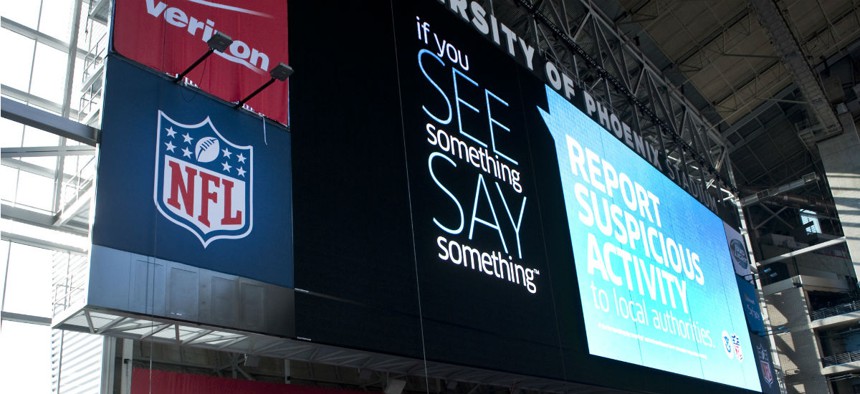Law Enforcement and the Crisis of Public Confidence
Agencies need to do a better job of explaining results.
"If You See Something, Say Something" is the most memorable public safety campaign I can think of. It began as a Homeland Security Department initiative but quickly branched out into a nationwide initiative at the federal, state and local levels and you can see the motto everywhere, particularly at public transportation hubs.
Here's a fun fact: the motto was originally rejected. As Mike Riggs reported several years ago in Reason.com (citing an Adweek article from 2002), Korey Kay & Partners tried to get the federal government to adopt it after the terrorist attacks of September 11, 2001. Nobody was interested -- not DHS, not the Justice and State departments.
But eventually DHS did adopt it, and according to Riggs, in 2008 the line "went viral." (The article offers an excellent timeline showing key moments in its adoption.) The question for students of law enforcement communication, and social media marketing, is whether the campaign has actually worked. The consensus is that it hasn't:
- New York magazine writer Dwyer Gunn, citing the work of NYU sociologist Harvey Molotch, points to the detrimental effect of many "leads that are likely to amount to nothing." For one thing, they make each individual lead less likely to be taken seriously. Overall, he notes, the program "hasn't yielded any terrorists."
- The New York Times in 2008 noted that the New York Metropolitan Transit Authority (MTA) claimed it got 1,944 campaign-related tips in 2006. The result? "No terrorists were arrested, but a wide spectrum of other activity was reported."
- TechDirt.com called the campaign the creation of a "Massive Database Of Useless Info From Citizens Spying On Each Other."
These commentators may be right; perhaps encouraging people to report on suspicious activities mucks up the system, distracts the feds and the police, creates unnecessary delays, and encourages an atmosphere of suspicion.
But then again, perhaps the problem with the campaign was not the idea, but its execution. Terrorism is on the increase, not the decline, and we need all available information to fight it. In "Key Trends in the Uncertain Metrics of Terrorism," published in 2016 by the Center for Strategic & International Studies, Anthony H. Cordesman notes:
"Virtually all of the data available indicate that these threats to the United States and its allies remain critical and that the geographic scope and intensity of terrorism continues to increase. At the same time, there are critical problems and shortfalls in the data available, a near total lack of credible unclassified data on the cost and effectiveness of various counterterrorism efforts, and critical problems in the ways the United States approaches terrorism."
In short, what Cordesman is saying is that we don't know enough, we don't measure well enough, and we don't think smartly enough about how we fight the bad guys (and ladies).
The public can and should play a huge role in supporting government efforts to fight terrorism. And despite the widespread criticism it has received, a glitzy ad campaign like "If You See Something, Say Something" can help. But -- and this is a big but -- by failing to report studiously on results, law enforcement leaves the public with the impression that this is a superficial campaign.
It gets worse than that. While the public respects law enforcement, they have almost no trust in the institutions and individuals associated with politics and public service. So while Gallup found in 2016, for example, that 76% of Americans have "a great deal of respect for the police." they simultaneously learned that:
- Only 7% have "a great deal of trust and confidence" in those "who either hold or are running for public office."
- Only 22% had "a great deal of trust and confidence" in the Executive, Judicial and Legislative branches of government combined.
- And only 8% had "a great deal of trust and confidence" in the Federal government's handling of domestic problems; 11% said the same of international problems.
"If You See Something, Say Something" is a great idea. It's a great concept. It's a great ad and a great brand. But in order for a brand to work, its customers have to see a promise being kept.
Law enforcement should start to fulfill the promise of this campaign by focusing on its results. If they're getting too many useless leads, they should help the public deliver more fruitful ones. And they should provide regular progress reports, in a coordinated way, that show how these improvements are yielding a true return on investment for the public.
Copyright 2017 by Dannielle Blumenthal. All opinions are the author's own and do not necessarily represent the views of her employer or any other organization or entity.







